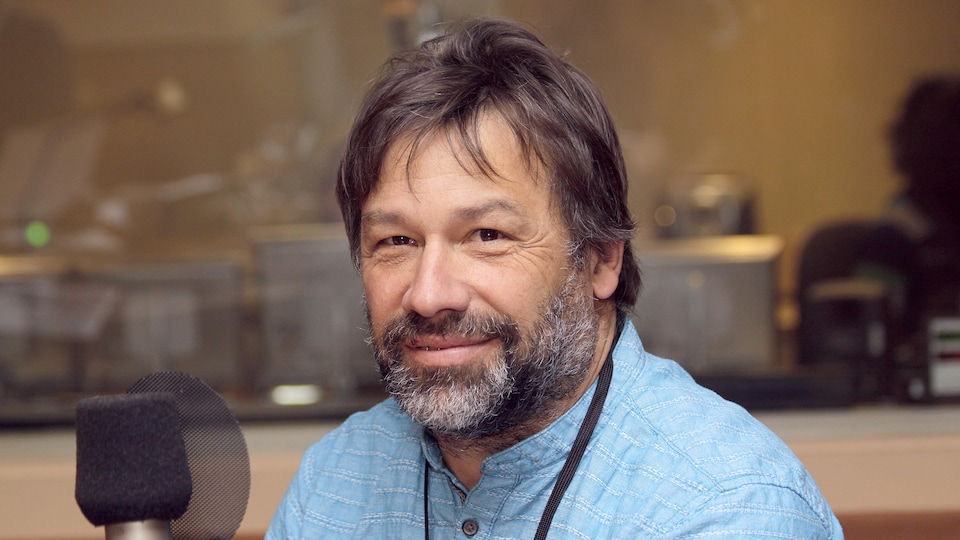Quebec is preparing to announce, next June, a dozen new protected areas in the south of the province.
According to information obtained by The Canadian Press, this is approximately ten of the 83 projects that were abandoned in 2020 in favor of protected areas in Quebec’s Far North.
Last February, the first batch of ten of these projects was finally approved, and a few more will soon be approved.
We are thriving. We should no longer talk about 83. We are closer to 70 and in a few days, a few weeks, we will still be lower than this figure.confirmed the Minister of the Environment, Benoit Charette, in an interview with The Canadian Press earlier this week.
The Ministry of the Environment and the Fight against Climate Change (MELCC) has been working for ten years – even longer in some cases – to protect the 83 territories in question in southern Quebec.
Delayed projects
Benoit Charette argues that time worked against the approval of these protected areas south of the 55th parallel.
The big problem with that list is that it was established in some cases in 2012, 2013, 2014. There are several newly elected municipal officials elected so far. It was necessary to re-validate the support the projects received almost ten years agosaid Minister Charette.
” What we want to avoid in the future is definitely a very long delay. Waiting 10 years before a project can be presented leaves room for a lot of uncertainty and that’s what we want to correct. “
However, biologist Alain Branchaud, general manager of the Society for Nature and Parks, Quebec section (SNAP Quebec), believes that time is not the main reason for this delay. Most protected area projects are done over a 10 -year period. A decade to do the project, it’s not something that’s weirdhe said.
Blocking the Ministry of Forests
For the projects set aside, the organized blockade by the Ministry of Forests, Wildlife and Parks (MFFP) has really been a hindrance. The Ministry of Environment wants to pass 83 projects in announcements by the end of December 2020said Mr. Branchaud.
” The strings are not fully tied in terms of interdepartmental consultations. It has been said on several occasions that the Ministry of Forests, Wildlife and Parks is the player hindering the government’s decision. “
In 2020, the Legault government instead announced its intention to protect territories in the Far North, beyond the 55th parallel, a strategy that allowed it to achieve its goal of protecting 17% of the territory (in fact, the the Ministry of the Environment’s register of protected territories reports 16.7% of Quebec’s area as protected as of March 31).
Pipmuakan Caribou
This decision to abandon projects in the south in favor of the northern territory has been refuted by environmentalist groups and First Nations, many of whom seek to protect the traditional territories they claim.
That is why Innus of Pessamit announced their intention, earlier this week, to send a formal notice to the government to give the green light to one of these projects, particularly the Pipmuakan protected area on the North Shore, specifically protect woodland caribou. Rapid advances in this protection will also allow the Legault government to not only escape possible legal action, but also to avoid the complex showdown that is taking shape with Ottawa, the federal Minister of ‘Environment, si Steven Guilbeault, who still threatens to adopt an order to pass through Quebec to protect caribou.
However, it is not known whether the Pipmuakan protected area is among the projects close to the announcement. One thing is certain, the Ministry of Forests does not see the loss of permitted cutting in this vast territory.
It should be noted that the 10 protected areas announced last February represent a total area of 279 square kilometers, according to our information, and not the 300 square kilometers announced by the government. However, the place first provided for MELCC for 10 projects it is 458 square kilometers. So the ministry had to accept 39% of the surface area of its projects so that they could get government approval.
The unloved places of the Far North
The criticisms often heard following the designation of protected areas in the Far North are related to the fact that they do not represent a large deal of biodiversity, as they are ecosystems alike, and they are not accessible to the population, which will not benefit them, unlike projects in the south of the province.
Surprisingly, Alain Branchaud disagrees with this interpretation.
It is not true that we only choose territories that are easy to protect where there are no barriers or biodiversity. Barriers and barriers to the north, there are some that are extremely important in terms of exploration and mining. There was a very strong lobby to prevent the reduction of all this mining potential, but Quebec still went ahead.he said.
” In terms of biodiversity, we still have two large herds of migratory caribou in the Far North. Many of these areas are very important strategic locations for migratory caribou. “
Not surprisingly, Minister Charette also has reservations about criticisms, but they are of a strange nature.
Talk to our friends in Cree, who are sometimes offended to hear that Cree territory is less important because it is farther north. Cree communities value these protected territories. For them, it’s not because they’re farther north that they don’t have much meritsaid the Minister.
” In these territories, Quebec has succeeded in achieving its goal [de 17 %] and this is the first time it has reached the target of an international environmental agreement. “
Reachable goals
Alain Branchaud recalled, however, that we are still far from the goal for 2030, which is to protect 30% of the territory. Even in the Far North, when we look at the percentage of points in Nunavik, so north of the 55th parallel, we are at 20% protection. There are still advantages to be made in the north.
While acknowledging that more benefits will be needed in the south, he said that at 17%, it’s normal that we have major imbalances, but not all 17% of us are in the Far North..
” It is true that we have a huge shortage of protected areas in the south. There is so much effort that must be made to achieve victories in southern Quebec that we must diversify approaches to how to find this consensus and mobilize people around a proposal. “
Moreover, he added, there is a shortage of manpower MELCC to advance cases more quickly and with more authority.
Better than elsewhere
Despite everything, the biologist refuses to adopt a catastrophic discourse, because the overall picture is not much darker than one thinks. When we compare what Quebec is doing to what is happening elsewhere in Canada, we are really very good. What is being done in Quebec compared to other provinces is incredible.
In particular, he points to the modernization of the Natural Heritage Protection Act, which has opened new laws, new conservation procedures that correspond to the objectives of biodiversity conservation, the objectives of conservation of biocultural elements, in addition to new laws of protected areas of the initiative of indigenous peoples. This is the kind of thing you don’t see anywhere in Canada.
Quebec has sown solid seeds to achieve the goals in 2030. What is lacking is a solid commitment from the government with a roadmap and important decisionshe begged.
” It takes time, it takes work. Right now, we are late and we also need to plan how we will develop ourselves, how we will organize ourselves for the next stages leading up to 2030. “
The North Shore lacking a little love
He pointed out in passing that one of the most neglected regions of southern Quebec is the Côte-Nord, who lack a little affection for protected areas. There are many projects there, including in Pipmuakan, or Walker Lake National Park, which the region seeks, which dreams, but is blocked by the Ministry of Forests.
The Magpie River is also on the list of projects, primarily because of its whitewater sports potential, one of the best in the world. However, in this case, the Department of Energy and Natural Resources is blocking and, behind it, Hydro-Québec. Although the state corporation denies the existence of dam projects on this river with high energy potential, Quebec is reluctant to release it because of this potential.
Alain Branchaud dreams – and he doesn’t just – of a local recreational tourism offering that will include whitewater activities at Magpie, Anticosti Island, Walker Lake and at Mingan Islands Park. One could reasonably say that they were going to the North Shore to spend three weeks full of interesting activities.
It is in this type of approach that protected area projects in southern Quebec take on full meaning, i.e., return to the population the natural spaces from which they can benefit in a sustainable way.
Source: Radio-Canada

